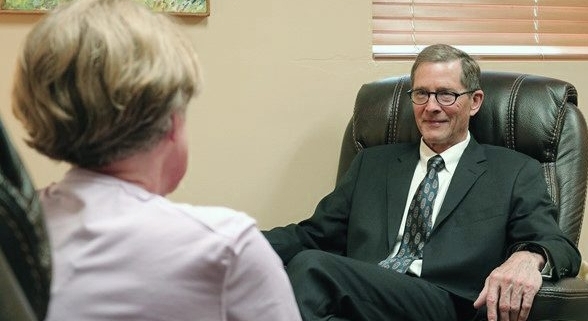Treat ADHD for Life—Live Better, Longer
The New York Times recently published an article¹ stating that people with ADHD are expected to have a significantly shortened lifespan. The article cites a study by Cambridge University titled “Life expectancy and years of life lost for adults with diagnosed ADHD in the UK”² which revealed that men with ADHD die about 7 years earlier and women die 9 years earlier than those without ADHD.
This research reviewed data from more than 30,000 individuals, revealing the ultimate impact of ADHD; ADHD ends lives sooner than necessary.
But ADHD doesn’t just shorten lifespan, it greatly impacts an individual’s life and choices starting in childhood. The Cambridge report states that people with ADHD are disproportionately likely to experience inequality and adversity, including:
- Decreased likelihood of completing or seeking education
- Greater likelihood of unemployment
- Financial struggles
- Discrimination
- Problems with the criminal legal system
- Homelessness
- Difficulty sleeping
- Higher alcohol intake
- Use of substances and smoking
- Physical health problems
- Difficulty managing mental health
- Increased risk of suicide
However, ADHD is a very treatable condition. At our Rapid City mental health clinic, we often see patients in their 60s or 70s who, with treatment, suddenly find relief after decades of struggling—in school, at work, and with relationships. Many of our adult ADHD patients find joy in their improved focus and concentration.
Some patients mourn the life they could’ve had if they had been diagnosed and treated earlier in life. Talk therapy can be advantageous for these patients to help process their new diagnosis.
Like Diabetes ADHD Must Be Treated for Life
The key takeaway from the Times article is that ADHD must be managed throughout your lifetime.
“To me, the best analog is diabetes,” said Dr. Barkley, a retired professor of clinical psychology at Virginia Commonwealth University. “This is a disorder that you’ve got to manage, like high blood pressure, like cholesterol and diabetes. You’ve got to treat this for life.”
– New York Times, People With A.D.H.D. Are Likely to Die Significantly Earlier Than Their Peers, Study Finds
Note that the Cambridge report is based on deaths of individuals who were diagnosed with ADHD – most diagnosed in childhood. It is estimated that 5-10% of the general population has ADHD, but only 10-20% of people who have ADHD are diagnosed and treated.
It’s Never Too Late to Get Screened for ADHD
As a psychiatrist, I believe that there should be mandatory ADHD screening for children. And parents should be made aware that the inattentive version (as opposed to hyperactive) of ADHD may go unobserved, especially in girls. And with genetic heritability as high as 80%, ADHD often affects multiple generations of the same family.³
Don’t hesitate to talk to your doctor or mental health provider about getting screened for ADHD in adulthood. The criteria for ADHD are straightforward and can be easily observed for the hyperactive type, though the inattentive type frequently goes undetected.
Neuropsychological testing can provide additional information about attention, memory and impulse control that can help confirm a diagnosis.
Medication Management for Adult ADHD
As we mentioned in the bullet points above, people with ADHD typically deal with many challenges and symptoms. One of these issues not yet covered is that many of these patients may be seeking treatment for the wrong condition.
As experts in treatment resistant mental health conditions, we often see patients who do not find relief from common antidepressants. For some patients, one of our depression treatments that work differently may be the answer, while for others, it may be a missed ADHD diagnosis.
For more information, read Undiagnosed ADHD Could Be the Reason Your Antidepressants Aren’t Working.
That’s why our psychiatry providers take a deep look at each patients’ medical history, symptoms, and lifestyle, plus we offer lab analysis and genetic testing to help you and your provider get a deep understanding of their brain and body health before coming up with a treatment plan.
¹ New York Times, People With A.D.H.D. Are Likely to Die Significantly Earlier Than Their Peers, Study Finds, Jan. 24, 2025 https://www.nytimes.com/2025/01/23/health/adhd-life-expectancy.html#
² O’Nions E, El Baou C, John A, et al. Life expectancy and years of life lost for adults with diagnosed ADHD in the UK: matched cohort study. The British Journal of Psychiatry. Published online 2025:1-8. doi:10.1192/bjp.2024.199
³ Grimm O, Kranz TM, Reif A. Genetics of ADHD: What Should the Clinician Know? Curr Psychiatry Rep. 2020 Feb 27;22(4):18. doi: 10.1007/s11920-020-1141-x. PMID: 32108282; PMCID: PMC7046577.

Stephen Manlove, MD graduated from the University of Minnesota Medical School and completed residencies in Psychiatry and Internal Medicine through the University of Virginia Medical School. He holds multiple board certifications in psychiatry/neurology, internal medicine and forensic psychiatry. This deep understanding of medicine gives him a unique ability to practice truly holistic psychiatry—fusing lifestyle changes and brain health best practices with genetic testing and a detailed laboratory workup to develop a personalized plan for each patient. As an early adopter of transcranial magnetic stimulation (TMS) and ketamine/Spravato, he and the Manlove Brain + Body team have helped thousands of patients suffering from treatment resistant depression, anxiety and PTSD.










